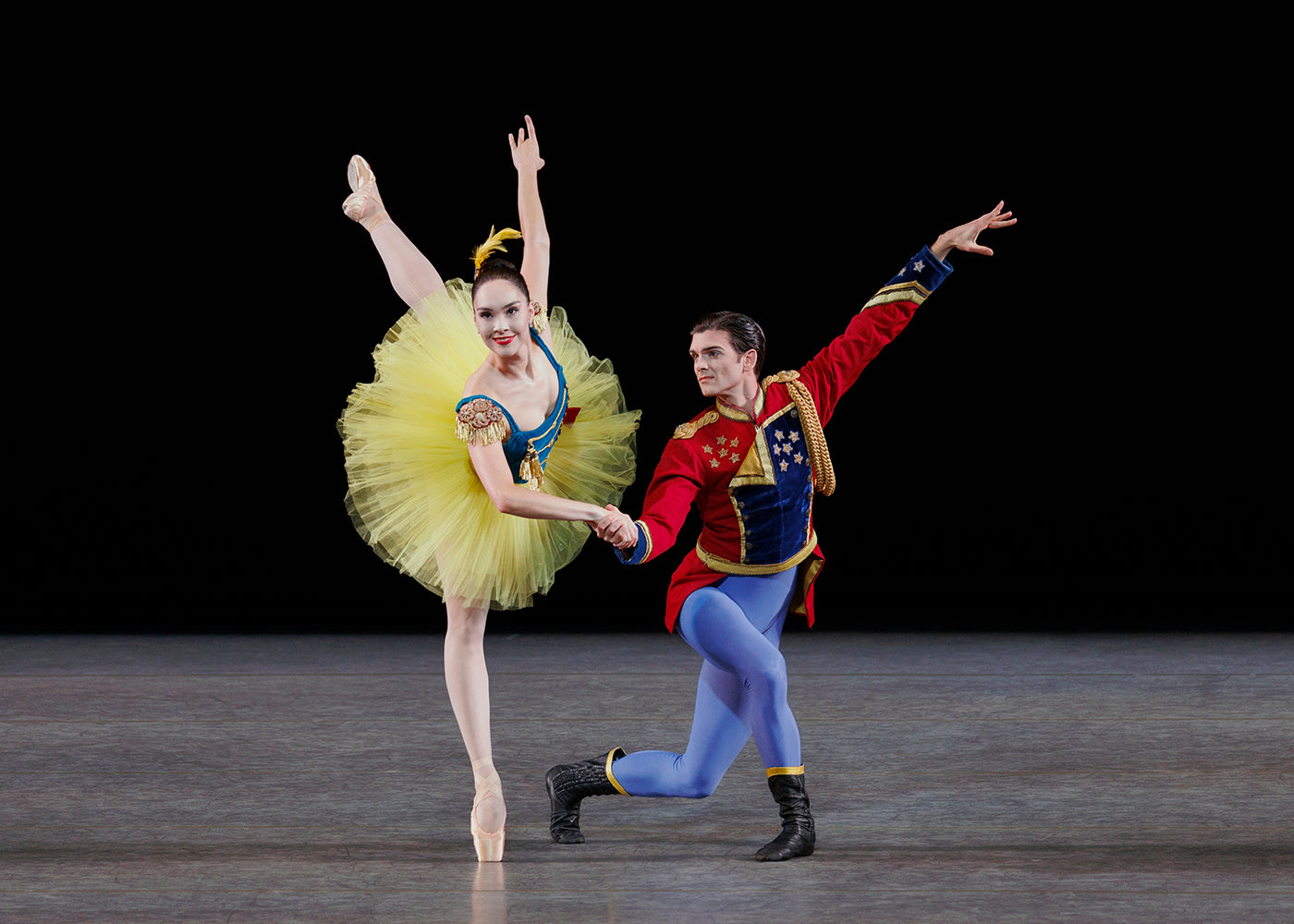Dancing and Screaming Against the Sky
“Profanations,” created by choreographer Faustin Linyekula and music artist Franck Moka, is not a “just” dance piece: it’s a live concert, a cinematic séance.
Continue Reading
World-class review of ballet and dance.
After a week of the well-balanced meal that is “Jewels”—the nutritive, potentially tedious, leafy greens of “Emeralds,” the gamy, carnivorous “Rubies,” and the decadent, shiny white mountains of meringue in “Diamonds”—the New York City Ballet continued its 75th Anniversary All-Balanchine Fall Season with rather more dyspeptic fare. Week two kicked off with the triple hot wing challenge of “Western Symphony,” “Tarantella,” and “Stars and Stripes.” The murky, brief “Unanswered Question” section from “Ivesiana” was tossed in like a Tums tablet. I can’t say the program wasn’t fun, but it was a lot to digest. Real (tambourines), fake (a plastic trumpet), and imaginary (harmonicas, banjos, fiddles) instruments were played. There were three variations on coda fouettés, two dance-off trick competitions, and two calf-busting relevé diagonals. Two finales featured principals resting against the front wings in funny hats. Yes, two.
Performance
Place
Words



“Uncommonly intelligent, substantial coverage.”
Your weekly source for world-class dance reviews, interviews, articles, and more.
Already a paid subscriber? Login

“Profanations,” created by choreographer Faustin Linyekula and music artist Franck Moka, is not a “just” dance piece: it’s a live concert, a cinematic séance.
Continue ReadingWhen Alban Lendorf (b. 1989) was four, he became attentive to the piano. As he explained in an interview with Pointe magazine, when his lessons advanced to the learning of a Chopin waltz, his piano teacher suggested he take dance classes to help open up the music. From the school of The Royal Danish Ballet to the company, his career rocketed forward; by the time he turned twenty-one, he was a principal dancer, still playing the piano and testing a latent gift for acting.
Continue ReadingMarie Antoinette is not an entirely sympathetic character. Her penchant for luxury and extravagance—and the degree to which she was out of touch with the lives of the majority— made her a symbol of the wealth disparity that prompted the French Revolution.
Continue ReadingAscending the Guggenheim Museum's rings through Rashid Johnson's retrospective, “A Poem for Deep Thinkers,” is a dance in of itself.
Continue Reading
comments